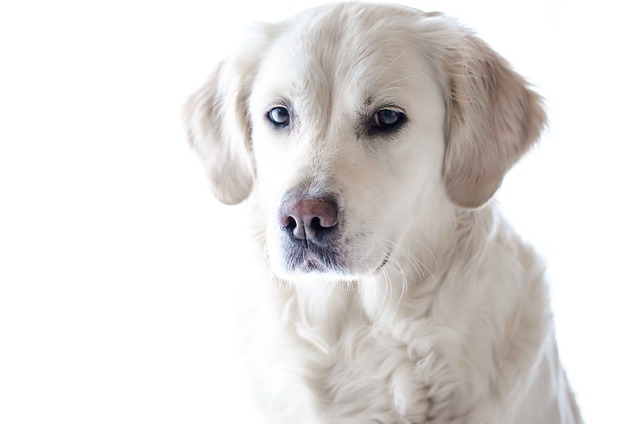
What is glaucoma in a dog?
You might notice your dog squinting more at mealtime or avoiding bright sunlight—these small changes could be early signs of a serious eye condition.
As dog owners, we always want to keep a close eye on our dogs' health conditions. Diabetes is not uncommon in dogs, and early detection and intervention play a crucial role in a dog's quality of life and lifespan. Fortunately, we can make a preliminary judgment at home about whether our dogs are at risk of diabetes through some observations and simple methods.
First of all, understanding the symptoms of diabetes in dogs is key. Excessive thirst and urination are one of the most obvious manifestations in diabetic dogs. If you notice that your dog's frequency of drinking water has increased significantly, for example, it used to drink just a small bowl of water a day but now may drink two or three bowls, and at the same time, the frequency and amount of urination have also increased remarkably, with urine stains found all over the house, then you should be vigilant. This is because when the blood sugar in a dog's body rises, the kidneys will produce more urine in order to excrete the excess sugar, leading the dog to feel thirsty frequently and drink a large amount of water.
Changes in appetite should not be overlooked either. Some diabetic dogs may experience polyphagia. They seem to be insatiable and have an unusually strong desire for food. However, even if they eat a lot, their weight may not increase but instead decrease, their bodies gradually become emaciated, and their fur loses its former luster, becoming rough and dry. This is because the body is unable to properly convert the ingested food into energy and has to consume its own fat and muscles, resulting in weight loss.
Some dogs may also show symptoms such as listlessness and excessive sleepiness. They used to be lively and active but now become lazy, losing interest in activities like playing and walking, and always lying in a corner without wanting to move. This is because the lack of energy supply in the body makes the dog feel extremely tired. In addition, vision problems may also be a sign of diabetes. If a dog suddenly experiences a decline in vision, for example, it easily bumps into things when walking and seems unfamiliar with its familiar environment, it may be because high blood sugar has affected the lens of the eye, leading to the occurrence of eye diseases such as cataracts.

When we observe these symptoms in our dogs, we need to take further action to confirm whether they have diabetes. At home, we can obtain some clues by monitoring our dogs' urine. There are special test strips on the market for detecting the glucose content in urine, which are easy to operate. Collect the dog's urine. You can use a clean container to catch it when the dog urinates, then immerse the test strip in the urine. After waiting for a certain period of time according to the instructions on the test strip, observe the color change of the test strip and compare it with the standard color chart. If the color shown on the test strip indicates a high concentration of glucose in the urine, then the possibility of the dog having diabetes is relatively high. However, it should be noted that some other diseases may also cause glucose to appear in the urine, so a diagnosis of diabetes cannot be confirmed solely based on a urine test.
In addition to the urine test, regularly weighing the dog is also an important method. Prepare an accurate pet scale, weigh the dog at a fixed time every week, and record the weight. If you find that the dog's weight has decreased significantly within a short period of time, combined with other symptoms, you need to take it to see a veterinarian in a timely manner.
Moreover, paying attention to the dog's diet and water intake can also provide us with a lot of information. Record the dog's daily water intake and food intake to see if they exceed the normal range. Under normal circumstances, a dog's daily water intake is approximately 40 - 60 milliliters per kilogram of body weight. If the dog's water intake is far beyond this standard, you need to pay attention. Similarly, an abnormal increase in food intake may also be a manifestation of diabetes.
However, it should be clear that these home inspection methods are only preliminary screenings and cannot replace a professional veterinarian's diagnosis. If we suspect that our dog has diabetes, we must take it to a pet hospital for a comprehensive examination in a timely manner. The veterinarian will accurately measure the dog's blood sugar level through professional means such as blood tests to determine whether the dog has diabetes and the severity of the condition. At the same time, the veterinarian will also develop a personalized treatment plan according to the dog's specific situation, including dietary adjustments, drug treatments, or insulin injections.
As dog owners, we should give our dogs more love and careful care in our daily lives. Observe the dog's behavior and physical condition more often. Once we find something abnormal, don't panic and take action in a timely manner. Early detection and treatment of diabetes can allow the dog to continue to accompany us healthily and happily for a long time. Let's use our love and professional knowledge to safeguard the dog's health and let them spend every happy and wonderful day by our side.

You might notice your dog squinting more at mealtime or avoiding bright sunlight—these small changes could be early signs of a serious eye condition.

Let’s set the scene: It’s a sweltering Phoenix afternoon—105°F outside—and you rushed your 2-year-old Lab mix, Cooper, on a quick walk to “get it over with.”

Let’s get real: You’re in your Miami apartment, watching your 3-year-old Corgi, Loki, struggle to climb the stairs to your second-floor unit.

Many dog owners brush off occasional scratching as just “dog behavior,” but persistent itching often signals something more—like a food allergy.

You might first notice your dog scratching more than usual—chewing at their paws until the fur looks thin, or rubbing their face against the couch nonstop.

Let’s be real: You’re standing in your Chicago apartment, watching your 3-year-old Beagle, Max, huff and puff just to climb onto the couch.